In the fast-paced world of digital workspaces, sedentary lifestyles, and prolonged screen time, discomfort in the back—especially the mid and upper regions—has become a near-universal experience. The increasing prevalence of poor posture, stress-induced muscular tension, and general physical inactivity has led to a surge in demand for effective, natural solutions to address this discomfort. Understanding how to relieve upper back pain fast at home starts with developing a strong awareness of back anatomy and the therapeutic potential of movement. This article delves deep into the science and strategy behind effective stretches for mid and upper back pain, offering evidence-based, easy back exercises that help strengthen spinal muscles, improve posture, and restore functional movement patterns.
You may also like : Best Stretches for Sore Legs and Tight Thigh Muscles: How to Relieve Upper Leg Pain Safely and Naturally
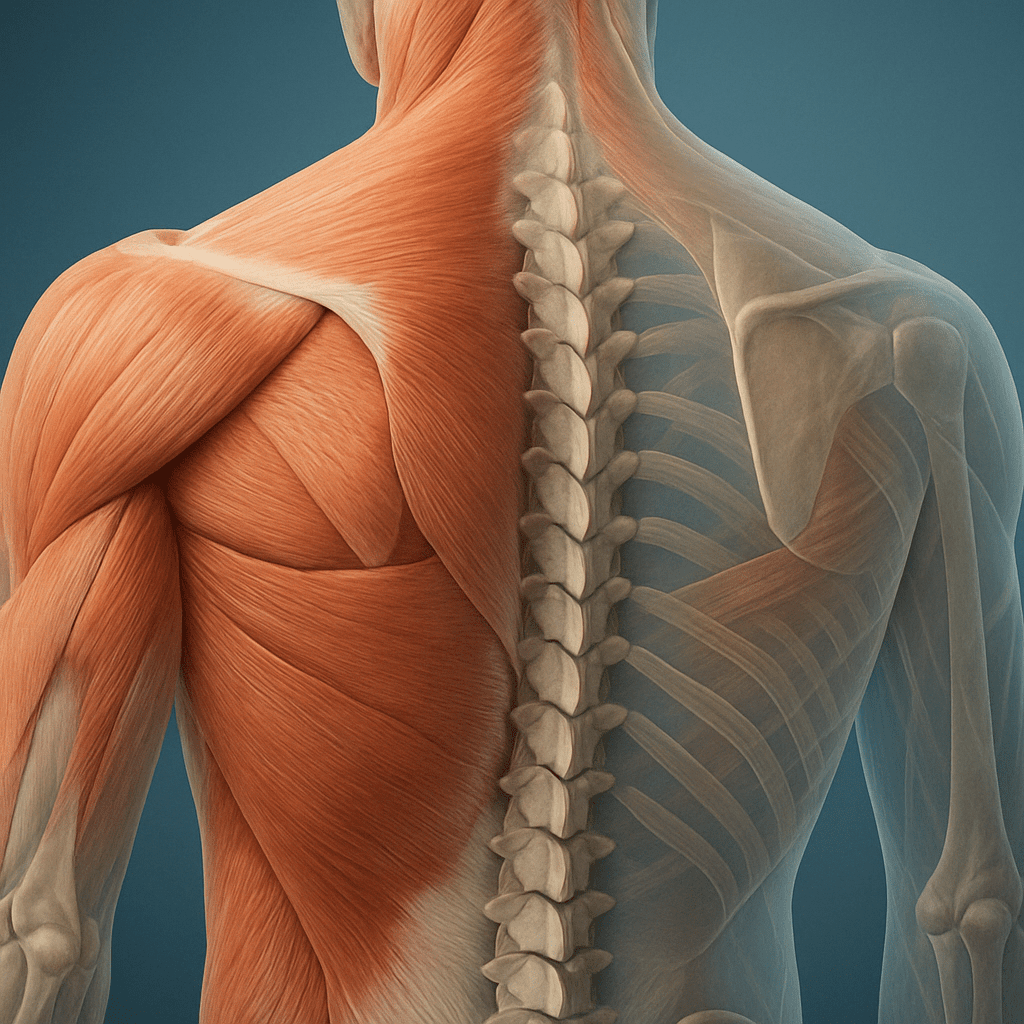
Understanding the Anatomy of the Mid and Upper Back
The mid and upper back comprises the thoracic spine and associated musculature, including the trapezius, rhomboids, latissimus dorsi, and spinal erectors. These regions play a vital role in stabilizing the shoulder girdle, supporting posture, and facilitating upper limb movement. Unlike the more mobile lumbar spine, the thoracic region is structurally rigid to protect vital organs, making mobility-focused exercises particularly important. Poor movement patterns, such as slouching at a desk or repetitive lifting with incorrect form, often contribute to muscular imbalances and joint restrictions. Effective back muscle exercises aim to restore functional strength to these postural muscles while promoting flexibility through dynamic and static stretching. Understanding this intricate network is key to selecting workouts for back health that are not only efficient but also safe and sustainable.
Why Mid and Upper Back Pain Is So Common
The surge in upper back discomfort among adults is not merely anecdotal. Clinical studies reveal a direct correlation between screen use, prolonged sitting, and the development of upper thoracic tension and discomfort. As individuals increasingly engage in forward-leaning activities like computer work or smartphone use, the musculature of the upper back becomes overstretched and weakened. This imbalance often leads to the need for targeted stretches for upper back pain that counteract the chronic postural deviations. Compounding the issue is stress, which has been shown to cause subconscious shoulder elevation and muscular guarding, particularly in the trapezius. Without intervention, these tensions become entrenched, making exercises to work out back regions a necessity not just for relief but for long-term spinal integrity.
The Role of Stretching in Spinal Health
Stretching serves as a bridge between pain relief and functional recovery. While many turn to massage or medication for quick relief, stretches for mid back pain offer a more proactive and empowering solution. By incorporating both static and dynamic movements into one’s routine, individuals can release tight connective tissue, improve blood flow, and signal the nervous system to down-regulate tension. For example, middle back stretches that focus on thoracic extension can help decompress the spine and allow for freer movement of the rib cage. These changes, while subtle at first, contribute significantly to improved posture and a reduction in daily discomfort. When combined with upper back strengthening exercises, stretching becomes a comprehensive strategy for spinal rejuvenation.
Best Practices for Safe and Effective Back Stretching
Engaging in stretches for mid and upper back without proper technique can do more harm than good. The spine, although resilient, is vulnerable to strain when exercises are performed without awareness or control. Experts recommend beginning each stretching session with a gentle warm-up to increase tissue elasticity and joint lubrication. Movements such as shoulder rolls, cat-cow sequences, and gentle trunk rotations are ideal. It is also critical to avoid bouncing or forcing the body into positions beyond its current capacity. Instead, back stretches for middle back pain should be approached mindfully, with an emphasis on breath and gradual progression. This approach not only reduces the risk of injury but enhances the effectiveness of each stretch in targeting deep fascial restrictions.

Stretches for Middle Back Pain That Target Thoracic Mobility
The thoracic spine, being less mobile than the cervical or lumbar spine, benefits immensely from movements that encourage rotation and extension. One highly effective option is the seated thoracic rotation, where the arms are crossed over the chest while seated upright, and the upper torso is gently rotated from side to side. This movement restores lost rotational capacity in the middle back, promoting fluidity in everyday tasks like reaching or twisting. Another favorite among physiotherapists is the child’s pose with side reach, which not only elongates the spine but also targets the intercostal muscles between the ribs. These middle back stretches offer relief without requiring any specialized equipment, making them ideal for home use. They are among the best back exercise practices for anyone looking to regain upper spinal freedom.

Stretches for Upper Back Pain That Relieve Muscle Tension
Tension in the upper back often accumulates near the shoulder blades and neck, particularly in the rhomboids and trapezius muscles. For individuals experiencing pain in upper back left side stretch routines can offer immediate relief if properly targeted. A particularly useful stretch in this context is the doorway pec stretch, which helps open the front of the body and counters the rounded shoulder posture. Wall angels are another popular exercise for back pain upper regions, as they engage the scapular muscles and encourage correct alignment of the shoulder girdle. Incorporating these stretches for upper back pain into a daily routine can drastically reduce discomfort and improve breathing mechanics, especially in individuals who spend most of their day sitting or lifting.
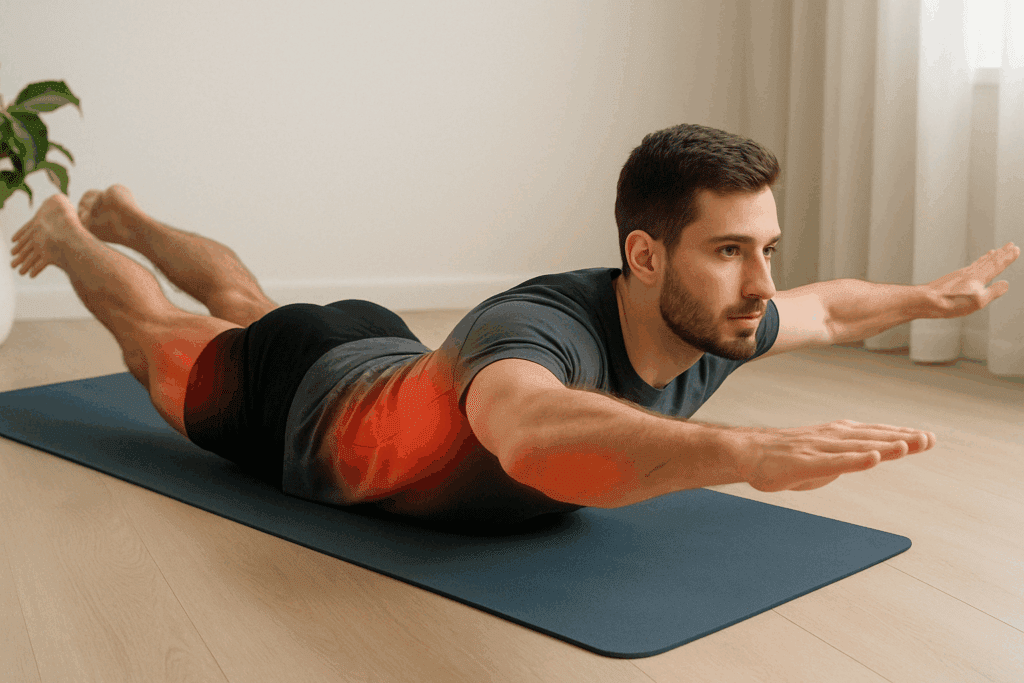
Strengthening Exercises to Complement Stretching
Stretching alone may alleviate discomfort, but without strengthening, the benefits are often temporary. Back muscle exercises designed to reinforce stability and alignment are essential for long-term relief and injury prevention. Rows using resistance bands or light weights help activate the rhomboids and mid-trapezius, while superman lifts target the spinal erectors and promote postural endurance. For those new to fitness, easy back exercises like prone scapular retractions can be highly effective. These movements teach proper muscular engagement without overloading the spine. Integrating both stretching and strengthening in a balanced program ensures a comprehensive back muscles workout that supports both form and function.
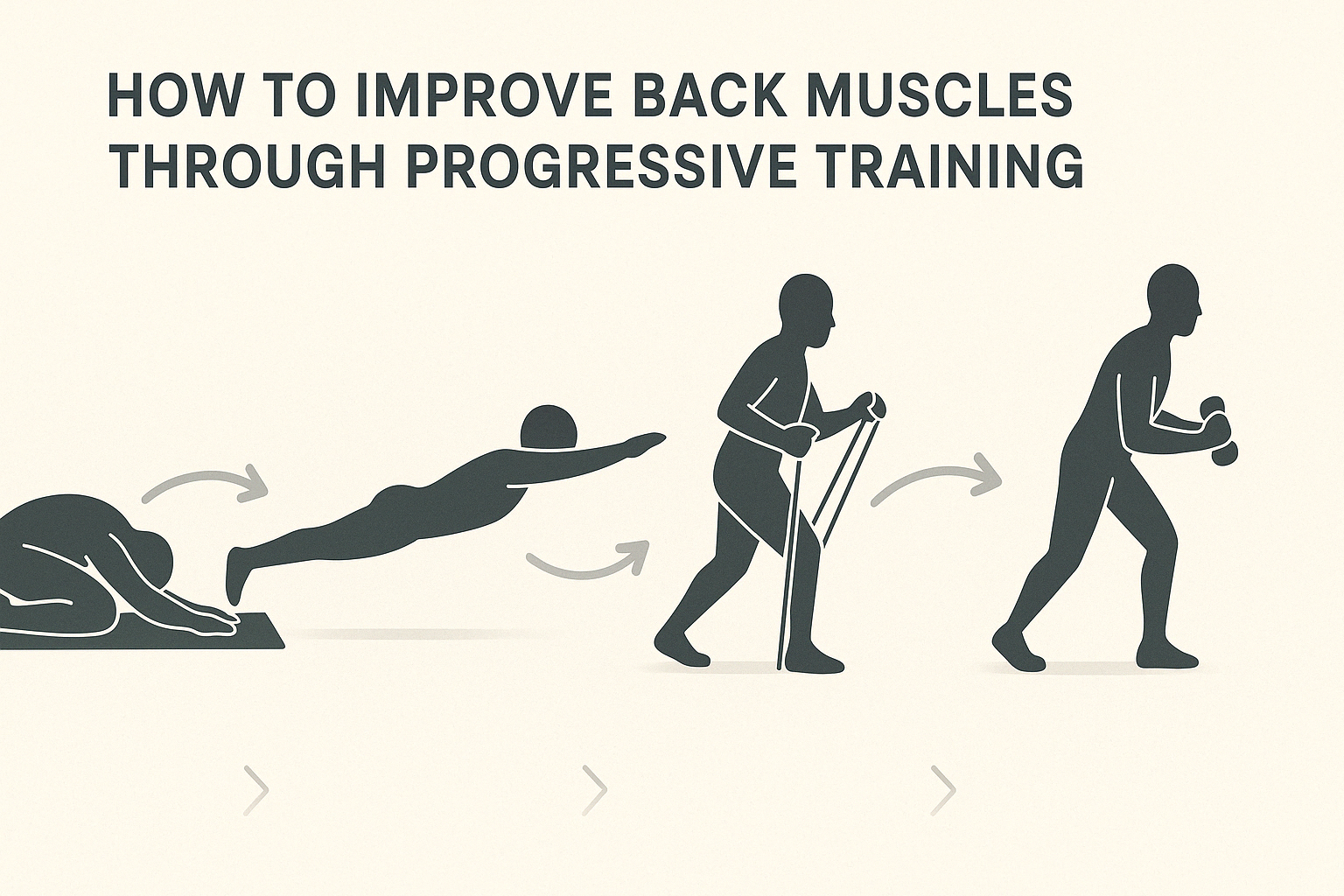
How to Improve Back Muscles Through Progressive Training
Progressive overload is a principle often associated with bodybuilding, but it applies just as effectively to functional spinal training. To truly improve back strength and mobility, one must gradually increase the complexity or resistance of their exercises. This might mean transitioning from bodyweight movements to resistance bands or dumbbells, or increasing the duration of holds in static stretches. Knowing how to improve back muscles requires an understanding of both physiological adaptation and individual limitations. For instance, those with previous injuries may need to modify their workouts for back health with the guidance of a physical therapist. Tracking progress over time, whether through reduced pain levels or increased range of motion, provides motivation and ensures adherence.
Addressing Chronic Tension with Back Stretches for Mid Back Pain
Chronic tension in the mid-back often stems from years of ingrained postural habits and unaddressed muscular dysfunction. While occasional stretching offers short-term relief, consistent practice is the key to lasting change. Back stretches for mid back pain that are performed daily—such as the seated forward fold, kneeling thoracic opener, or thread-the-needle—work synergistically to reduce stiffness and restore natural spinal curves. As these exercises become habitual, the body learns to default to healthier movement patterns even when not actively stretching. The goal is not merely to perform a back stretch, but to re-educate the neuromuscular system toward balance and efficiency. These exercises to strengthen spinal muscles go beyond symptom management; they empower individuals to take control of their spinal health.
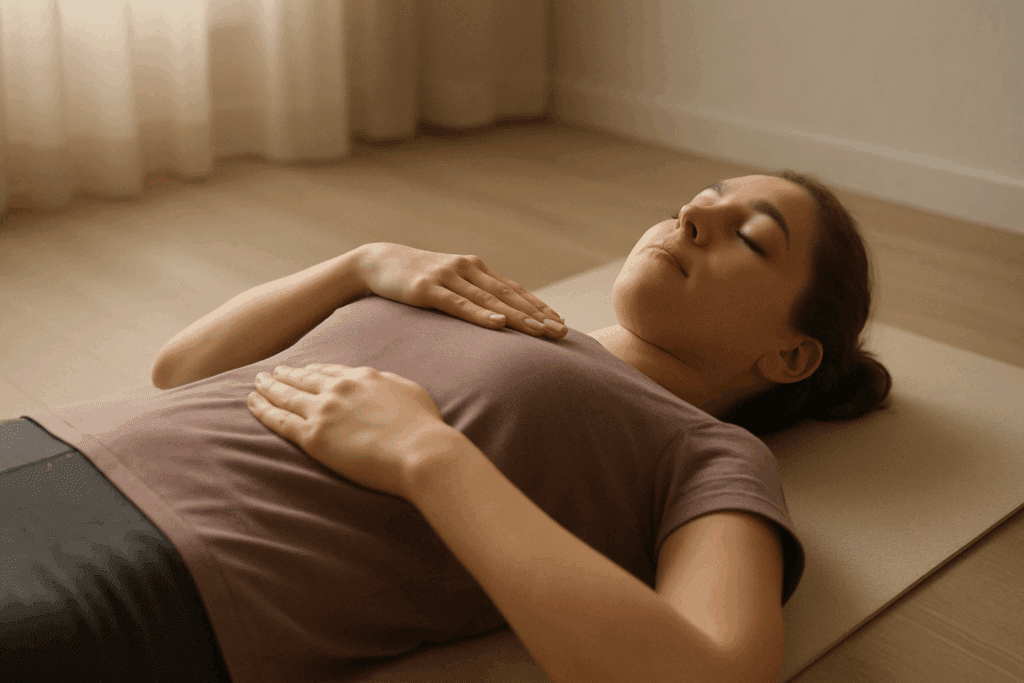
The Science of Breath and Its Role in Back Recovery
Breathing is more than a passive function—it’s a powerful tool for regulating spinal mechanics and relieving muscular tension. The diaphragm, intercostals, and deep core muscles are all involved in respiration, and their engagement (or lack thereof) can affect postural alignment. Dysfunctional breathing, often characterized by shallow chest expansion, reinforces poor posture and thoracic stiffness. To counteract this, incorporating structured breathwork practices like box breathing or pursed-lip exhalation during stretches for upper back pain can increase oxygen delivery to tissues and improve muscular coordination. Over time, this practice reinforces core stability and complements workouts for back strength by improving neuromuscular efficiency. Integrating breath awareness into both active and restorative movements ensures that the nervous and musculoskeletal systems work in harmony.
Upper Back Strengthening Exercises for Postural Support
Postural support is a dynamic process involving muscular coordination and joint alignment. Upper back strengthening exercises such as face pulls, resistance band pull-aparts, and prone Y-raises engage the smaller, often underused stabilizer muscles around the scapula. These movements counteract the protracted shoulder position that is so common in modern life. What are some good back exercises that support upright posture and reduce fatigue? Incorporating a mix of these strength-based moves with targeted mid back stretches can reset postural habits and enhance physical resilience. These workouts for back muscles are not about aesthetic enhancement but functional restoration—ensuring that the body can carry itself with grace and efficiency throughout daily life.
Addressing Muscle Imbalances with Good Back Exercises
Muscle imbalances in the back can lead to compensatory movement patterns, increasing the risk of injury and pain. A good back exercises program should address both sides of the body evenly while paying attention to areas of weakness. For example, one might notice that one side of the back fatigues more quickly during exercises to work out back muscles, indicating an asymmetry. In this case, unilateral movements such as single-arm rows or one-sided spinal twists can help reestablish balance. These types of good lower back lifts and upper back routines ensure that the musculature is evenly conditioned, reducing compensatory strain on the spine and joints. Understanding how to work back muscles holistically is essential for anyone interested in sustainable, long-term improvement.
The Role of Ergonomic Design in Reducing Back Strain
Creating an environment that supports spinal health is just as important as doing the right exercises. Ergonomic design—particularly in the workspace—can drastically reduce the physical load on the mid and upper back. Adjustable chairs, lumbar cushions, sit-stand desks, and properly positioned monitors help maintain spinal neutrality throughout the day. Even the angle of a keyboard or the height of a phone can impact how the back muscles work. Individuals seeking easy back exercises can start by first adjusting their daily environment to reduce the frequency of poor posture. When stretching and strengthening occur in a supportive context, the body retains those improvements more effectively. In other words, good environmental design complements good lower back lifts and mid back stretches by making them more sustainable.
Nutritional and Hydration Support for Connective Tissue
While not a substitute for movement, nutrition plays a crucial role in the body’s ability to repair and maintain healthy connective tissue. Collagen-rich foods, anti-inflammatory omega-3 fatty acids, and adequate protein intake all support muscle recovery after back muscles workout sessions. Hydration is equally important, as dehydrated fascia and intervertebral discs become less pliable and more prone to strain. Supplementing a back-strengthening program with nutritional strategies ensures that the gains made through stretches for mid back pain are preserved and reinforced at the cellular level. Those wondering what are some good back exercises may be surprised to learn that without proper fuel, even the best workouts for back development may yield suboptimal results.
Exercises to Strengthen Backbone Muscles for Spinal Integrity
The spine relies not only on the large superficial muscles but also on deeper stabilizing structures such as the multifidus and transversospinalis. Exercises to strengthen backbone muscles target these deep tissues, often through controlled, low-amplitude movements. Bird dogs, dead bugs, and plank variations are particularly effective, as they teach the body to maintain spinal alignment under dynamic conditions. What are some back exercises that strengthen these critical muscle groups without stressing the joints? Those that emphasize core engagement and controlled breathing provide the best outcomes. Practicing these consistently creates a foundation of strength and endurance, making them some of the best back exercise strategies for spinal health.
Emotional Awareness and the Psychosomatic Component
Back pain is often referred to as a biopsychosocial condition, which means that emotional and psychological states can influence its onset and persistence. Chronic tension in the upper back, particularly around the scapula and thoracic spine, has been associated with emotional stress and unresolved psychological strain. Mind-body therapies such as guided meditation, body-based psychotherapy, and journaling can help address this often-ignored component. For those integrating back stretches for middle back pain into their daily routine, adding emotional reflection may amplify results. When emotional expression is supported alongside physical mobility, individuals often experience a greater sense of release and healing. Recognizing this connection is a key insight for those looking to not just treat symptoms but understand how to get a back that feels lighter and freer in all dimensions.
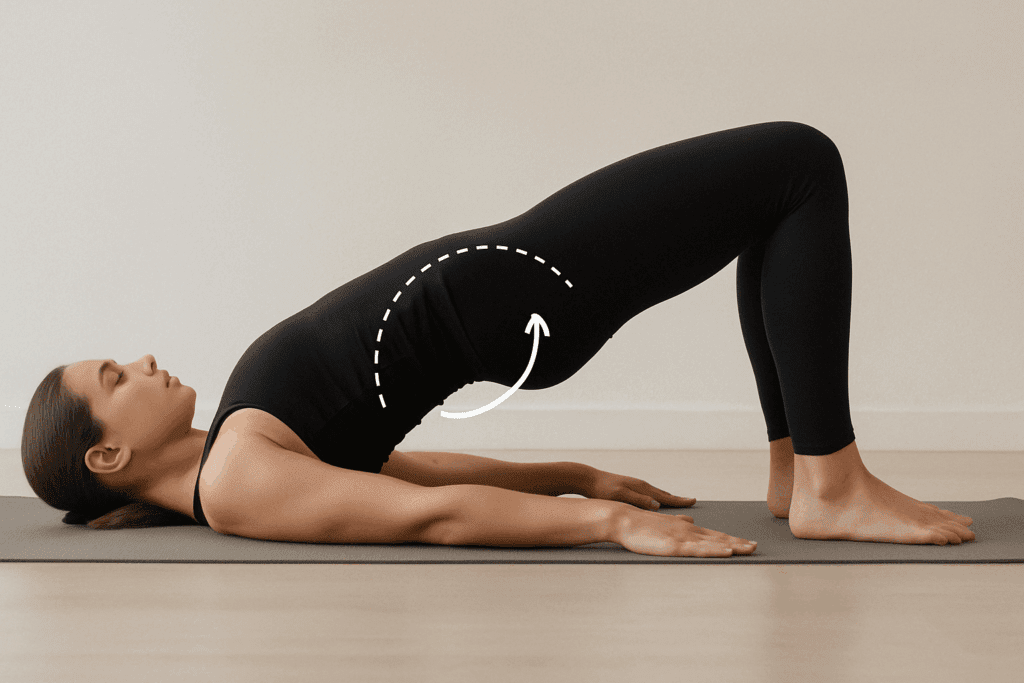
Pelvic and Core Integration for Back Stability
The spine does not exist in isolation, and its stability is directly influenced by the positioning of the pelvis and the activation of the core. Weak or misaligned pelvic structures can lead to compensatory tension in the mid and upper back. Exercises such as bridges, pelvic tilts, and deep core engagement drills help stabilize the base of the spine and distribute mechanical load more evenly. These movements complement exercises to strengthen spinal muscles by creating a more stable foundation. Understanding how to work back muscles in conjunction with pelvic and core mechanics deepens the impact of your routine and reduces recurrence of strain.
Creating a Sustainable Back Care Routine at Home
Designing a back care routine that can be sustained at home involves more than selecting a few favorite stretches. It requires intentional planning, variety, and progression. A well-balanced routine includes middle back stretches, upper back strengthening exercises, and great lower back workouts, all organized to alternate between mobility and stability training. Consistency is more important than intensity, especially in the beginning. Starting with easy back exercises allows for gradual adaptation and builds the confidence needed to explore more challenging movements. Over time, this routine evolves from a treatment strategy to a lifestyle practice—one that supports not only spinal health but overall well-being.
The Mind-Body Connection in Back Rehabilitation
Back rehabilitation is as much about mindset as it is about movement. Chronic pain can alter neural pathways, creating a feedback loop of tension and sensitivity. Incorporating mindfulness into back stretches for mid back pain and strengthening sessions can improve outcomes significantly. Techniques such as diaphragmatic breathing, body scans, and visualization help calm the nervous system and enhance muscular receptivity. This is especially useful for those seeking to know how to relieve upper back pain fast at home, as immediate improvements often hinge on nervous system regulation as much as physical change. By treating the body and mind as a unified system, individuals can unlock greater gains and prevent future flare-ups.
How to Get a Back That Feels and Functions Better Every Day
Achieving a strong, pain-free back is not a distant goal reserved for athletes or fitness professionals. With the right approach, anyone can learn how to get a back that is both resilient and relaxed. The secret lies in combining mid back stretches and upper back strengthening exercises with consistency, patience, and self-awareness. It also involves listening to the body—knowing when to push and when to rest, and recognizing the early signs of fatigue or misalignment. As one continues to explore what are some good back exercises tailored to their unique anatomy, a deeper understanding of spinal health emerges. The result is a body that not only performs better but feels better in everyday life.
Frequently Asked Questions: Advanced Back Health and Pain Relief Insights
1. How do neurological patterns affect the effectiveness of back exercises?
Neurological patterns shape the way your body perceives movement and pain. Even the most well-designed back exercises may fall short if your nervous system is in a chronic state of high alert due to previous trauma or stress. Techniques like proprioceptive neuromuscular facilitation (PNF) and somatic movement training can rewire these patterns, making back exercises exercises more effective by teaching the brain to allow deeper, pain-free motion. This is especially valuable when using stretches for upper back pain that previously triggered discomfort. By incorporating gentle middle back stretches with mindfulness, the nervous system becomes an ally in healing rather than a barrier.
2. Can posture correction devices help during workouts for back health?
Yes, posture correction devices such as wearable sensors and supportive braces can enhance body awareness during workouts for back rehabilitation. These tools provide real-time feedback, which helps users engage in back muscle exercises with proper form and alignment. They are particularly useful when performing upper back strengthening exercises, as they prevent compensation patterns that might otherwise go unnoticed. When combined with stretches for mid back pain, these devices help build neuromuscular awareness, reinforcing long-term changes in posture. Their integration into training routines supports the consistency required for spinal reconditioning.
3. What role does hydration play in spinal mobility and middle back stretches?
Hydration is a critical, often underestimated factor in spinal health. The discs between your vertebrae and the fascia surrounding your muscles rely on proper fluid balance to remain pliable and shock-absorbent. Dehydrated tissue can lead to stiffness and increased discomfort during middle back stretches or any type of back muscles workout. Staying hydrated also helps reduce muscle cramps and supports metabolic waste removal after intense back muscle exercises. This makes proper fluid intake an essential complement to daily stretches for middle back pain.
4. Are there effective ways to integrate mobility tools into back workouts?
Absolutely. Tools like foam rollers, lacrosse balls, and massage sticks can be seamlessly integrated into back stretches for mid back pain and spinal recovery routines. These devices help with myofascial release, which reduces adhesions and restores tissue glide between muscles. Using a foam roller before engaging in back exercises prepares the body by increasing circulation and range of motion. Meanwhile, using mobility tools post-exercise promotes recovery and reduces delayed-onset muscle soreness after a challenging back muscles workout. Their use can elevate even easy back exercises into more impactful sessions.
5. How can someone tailor back exercises if they have scoliosis or spinal asymmetry?
Individuals with scoliosis or spinal imbalances require customized programs that emphasize symmetry and spinal stabilization. Rather than relying solely on generalized back exercises exercises, these individuals benefit from unilateral training—where each side of the body works independently. Exercises such as single-arm rows and side planks can help address the muscular imbalances often seen in scoliosis. Back stretches for middle back pain should be carefully selected to avoid overstretching the convex side of the curve. Working with a physical therapist is advisable, especially when learning how to strengthen backbone muscles safely in this context.
6. Can core activation influence the results of upper back strengthening exercises?
Yes, a strong and activated core significantly enhances the effectiveness of upper back strengthening exercises. The core acts as a stabilizing platform, allowing back muscles to contract with precision and safety. Without core engagement, efforts to perform workouts for back strengthening may place unnecessary stress on the spine. Including planks, dead bugs, or hollow body holds alongside stretches for mid and upper back can promote comprehensive spinal engagement. This integration builds true resilience rather than isolated strength.
7. What recovery strategies work best after intense back muscles workout sessions?
Recovery from back muscles workout routines involves more than passive rest. Active recovery strategies such as contrast showers, light stretching, and lymphatic drainage techniques help the body clear metabolic byproducts and reduce soreness. Back stretches for mid back pain, when performed with gentle intention, can actually accelerate the healing process by improving circulation and tissue hydration. Nutritionally, including magnesium and omega-3-rich foods supports muscle relaxation and inflammation control. Over time, layering recovery protocols with consistent back exercises fosters a regenerative environment for the spine.
8. How can breathwork improve the impact of back exercises exercises?
Breathwork enhances neuromuscular control, spinal stability, and pain modulation during back exercises. Deep, diaphragmatic breathing helps activate the transverse abdominis and pelvic floor—core muscles critical for supporting the spine during back muscle exercises. Proper exhalation during exertion stabilizes intra-abdominal pressure, reducing the load on the lumbar and thoracic segments. Breath-synchronized movement also calms the sympathetic nervous system, making it easier to access deeper stretches for upper back pain. For those wondering how to get a back that’s both strong and pain-free, breathwork is a missing link that offers profound physiological benefits.
9. Are there psychological factors that impact the success of back rehabilitation?
Yes, emotional stress and psychological trauma can significantly affect muscular tension and movement patterns. Back pain is often linked to emotional holding patterns, especially in the upper thoracic region. People experiencing anxiety or depression may subconsciously tense their shoulders and back, making even good back exercises less effective. Mind-body modalities like yoga therapy, EMDR, or trauma-informed stretching routines can unlock this stored tension. Combining psychological support with physical exercises to strengthen spinal muscles produces more holistic and lasting results.
10. What are the signs of progress when using easy back exercises at home?
Progress doesn’t always manifest as immediate pain relief. Subtle gains, such as improved posture while sitting, reduced stiffness upon waking, or easier performance of daily tasks, are strong indicators of improvement. Individuals may also notice they no longer need to rely on a pain in upper back left side stretch as frequently, as overall mobility improves. Feeling more grounded during exercises to work out back areas suggests enhanced proprioception and neuromuscular control. Ultimately, consistency in applying easy back exercises combined with awareness of these shifts marks the beginning of sustainable back health.
Conclusion : Why Stretches for Mid and Upper Back Are Essential for Spinal Health
There is no denying that back health is central to overall well-being. From athletic performance to daily productivity, the spine plays a silent yet pivotal role in everything we do. Stretches for mid and upper back serve as accessible, effective tools to alleviate pain, enhance mobility, and build strength. When combined with back exercises exercises that target both deep and superficial musculature, they provide a holistic path to spinal resilience. Whether you’re navigating the discomfort of sedentary living or recovering from chronic back tension, embracing a well-rounded routine of back muscle exercises is one of the most powerful investments you can make. By prioritizing consistency, mindfulness, and gradual progression, you not only support your spinal health but cultivate a greater sense of ease and vitality throughout your entire body.
Was this article helpful? Don’t let it stop with you. Share it right now with someone who needs to see it—whether it’s a friend, a colleague, or your whole network. And if staying ahead on this topic matters to you, subscribe to this publication for the most up-to-date information. You’ll get the latest insights delivered straight to you—no searching, no missing out.
Further Reading:
Strengthen Your Spine With These 10 Exercises


